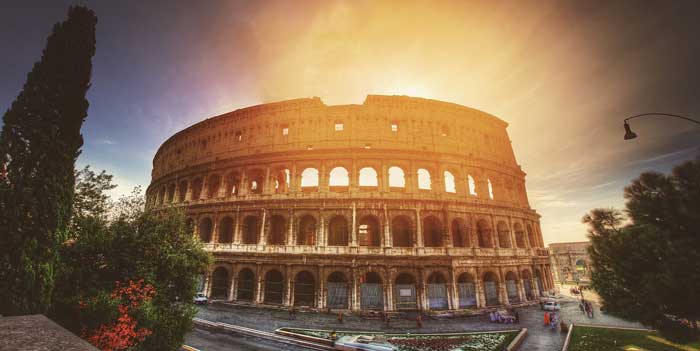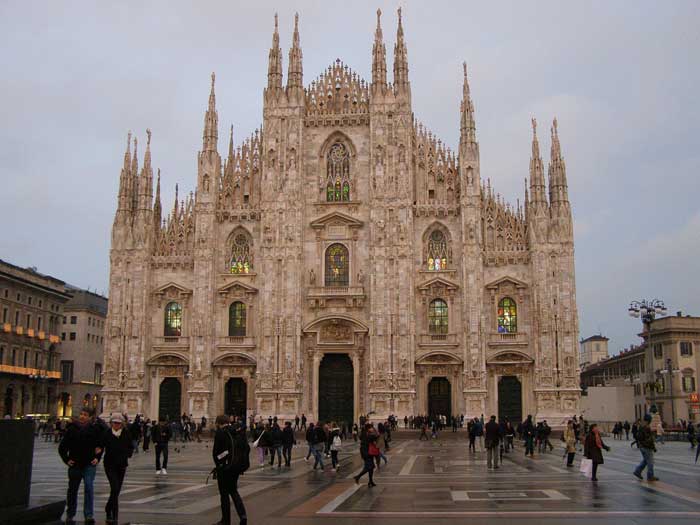Legendary Grand Canal, Italy, Venice

Italy, Venice is an artistic masterpiece of past and present, old and new, antiquity and modernity. Here we discover the Grand Canal, Canal Grande in Italian, and the most popular Venice attractions of a truly astounding city.
Venice, Italy is an island-city or city of islands and her historic center is a tightly integrated set of 117 small islands connected by over four hundred bridges.
In Venezia, Italy, every time you cross a bridge you are entering another island!
Navigate The Grand Canal of Venice, Italy
The Canal Grande is the main water route that crosses Venice and divides the center of the town in two zones with three districts in each area while describing a reverse S-shape.
Probably this water corridor follows the course of a river that flowed into the Laguna in the past.
The banks of the Grand Canal are lined up with prestigious buildings, palaces and churches, most of which were built between the 13th and the 18th century.
The Venetian nobility proudly competed to own the most beautiful, the highest, the most modern palazzo and hence secured the services of the most famous architects of the time for their ambitious projects.
Don’t Miss the Rialto Bridge
Until the 19th century, the Ponte de Rialto was the only bridge crossing the Grand Canal.
The Rialto bridge is a witness to the glorious history of Italy, Venice and to this day it silently watches the Venetian popular festivities, in particular the Regata Storica, Historical Regatta in English, with its colorful processions of typical Venetian rowboats such as the richly embellished bissone and the ornamented gondolas.
The Rialto Bridge is the most popular of all Venetian bridges. The present stone arch bridge was designed by Antonio da Ponte and completed in the year 1591.
At the time The engineering was thought so bold that the famous architect Vincenzo Scamozzi predicted a disaster. Luckily, he wasn’t right and the Ponte di Rialto has become one of the main Venice, Italy attractions, the king of all Venetian bridges.
Visit the Basilica di San Marco and Piazza San Marco
Saint Mark’s Basilica is a magnificent cathedral that lies at the eastern end of the Piazza San Marco and is a symbol of the maritime power and commercial prosperity of the Republic of Venezia.
Viva San Marco! was the battle cry used until its dissolution in 1797.
Not many people know that the Basilica di San Marco only became cathedral in the year 1807. In its origins the Church of San Marco was quite primitive, but by the end of the 12th century the splendid golden mosaics of the interior of the basilica that we see today were already almost complete.
St Mark’s Square is known as La Piazza (the Square) and its size and trapezoidal shape is the result of successive expansions and modifications. Most important events of Venice are held here and some believe that it was Napoleon that called Piazza San Marco the Drawing Room of Europe.
When the tide is over 90 cm or 3 ft, Piazza San Marco begins to flood and you’ll be able to experience the typical Acqua Alta phenomenon.
Santa Maria della Salute is a Must-See Basilica
Santa Maria della Salute, which means Saint Mary of Health, is known as La Salute and it is the highest expression of Venetian Baroque.
This Venetian basilica stands in an impressive location in the Punta della Dogana in the Dorsoduro district of Italy, Venice, rising from a narrow finger of land between the Grand Canal and St Mark’s basin.
It is the most recent of the plague-churches, built to liberate Venice from the plague that decimated her population between 1630 and 1631.
On December 21 Venetians celebrate the Festa della Madonna della Salute, one of the most popular festivals in Venice, Italy that dates back to 1630. On this day Venetians cross a bridge made of boats that runs from San Marco to La Salute where they pray.
We have selected a stunning gallery of the best Venice attractions so that you can see the beauty that’s waiting for you when you travel to Italy, Venice. Click the button below to see the images.






